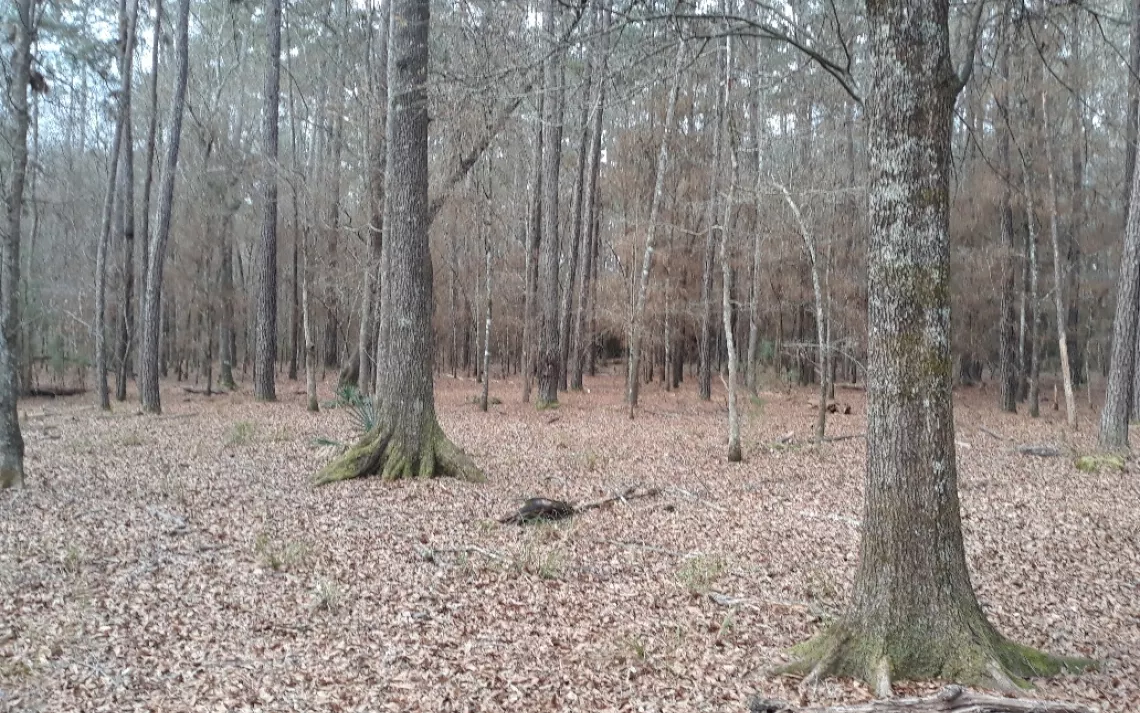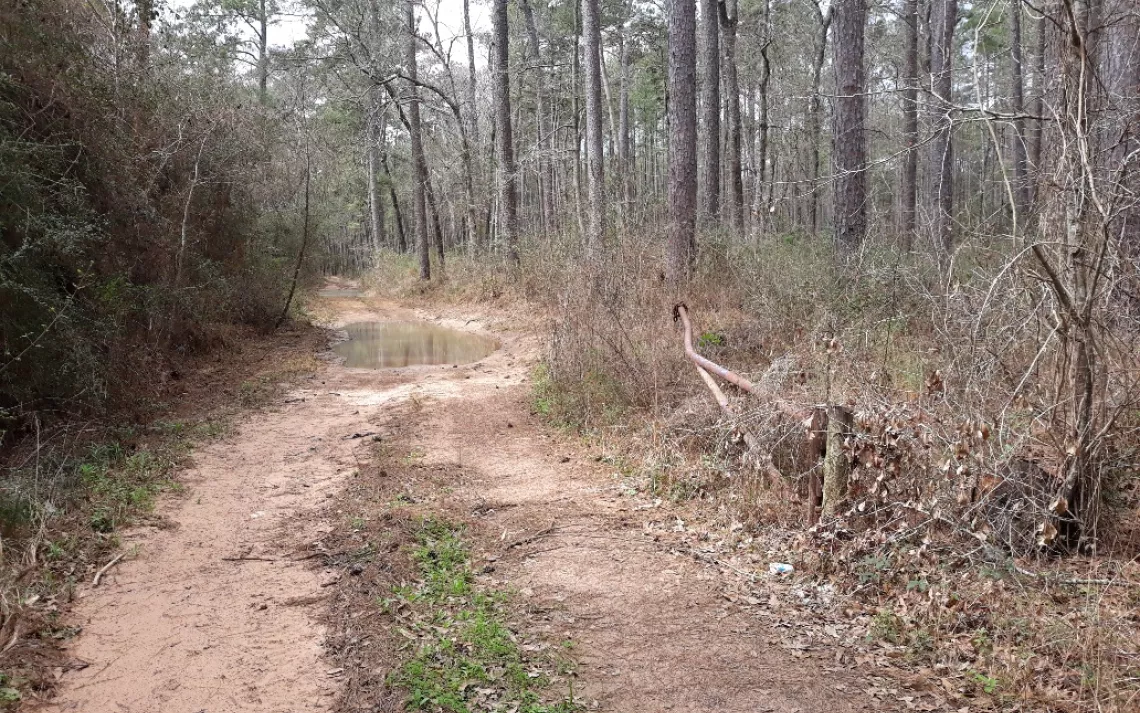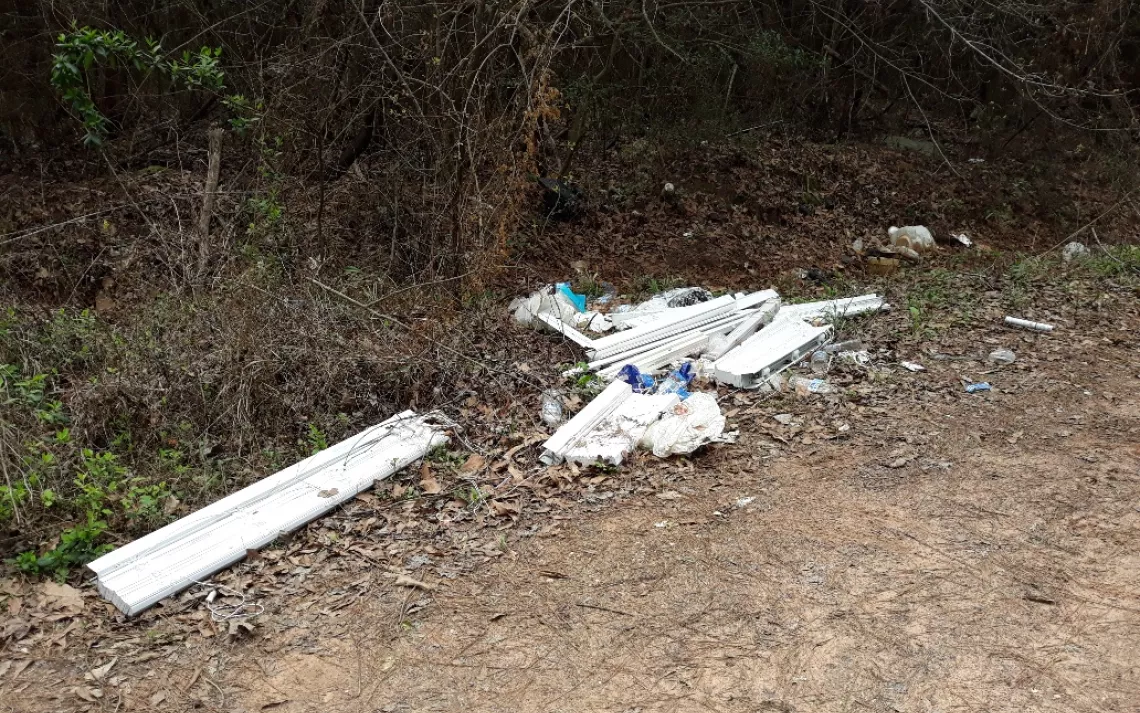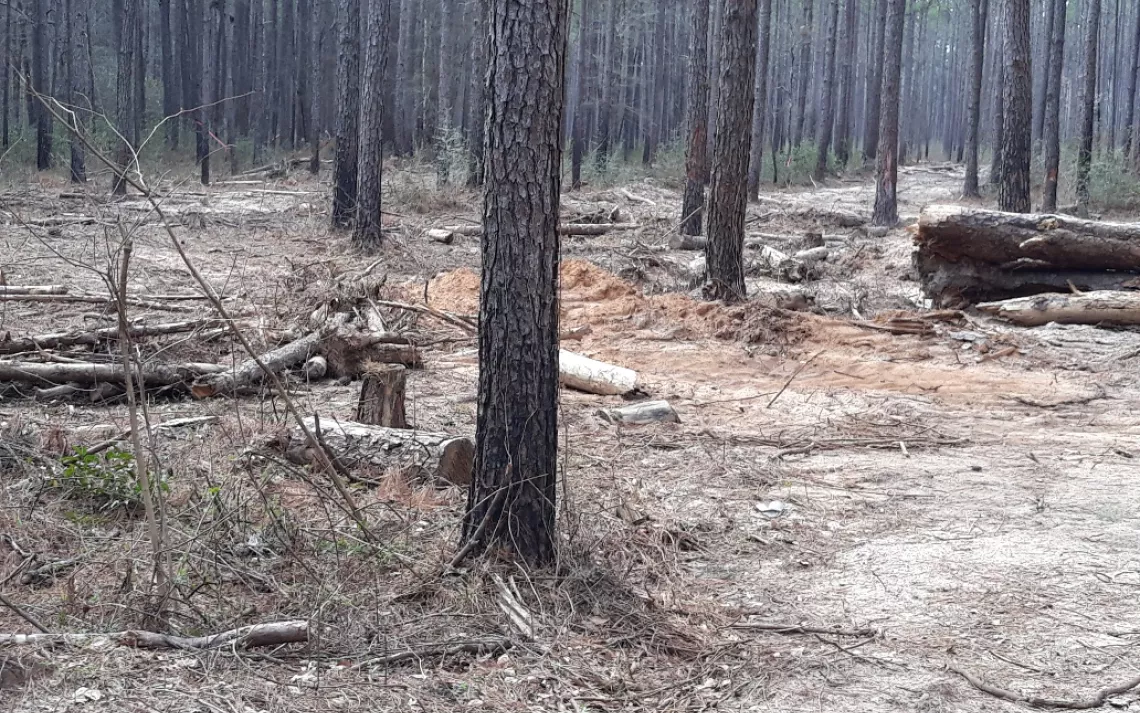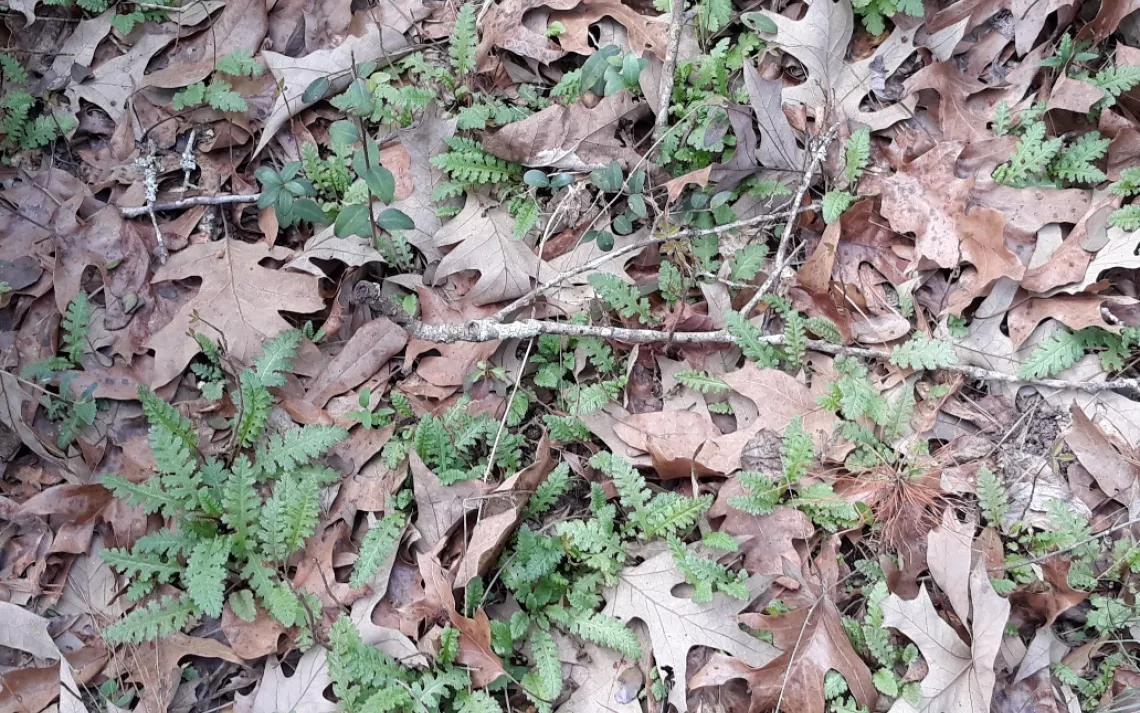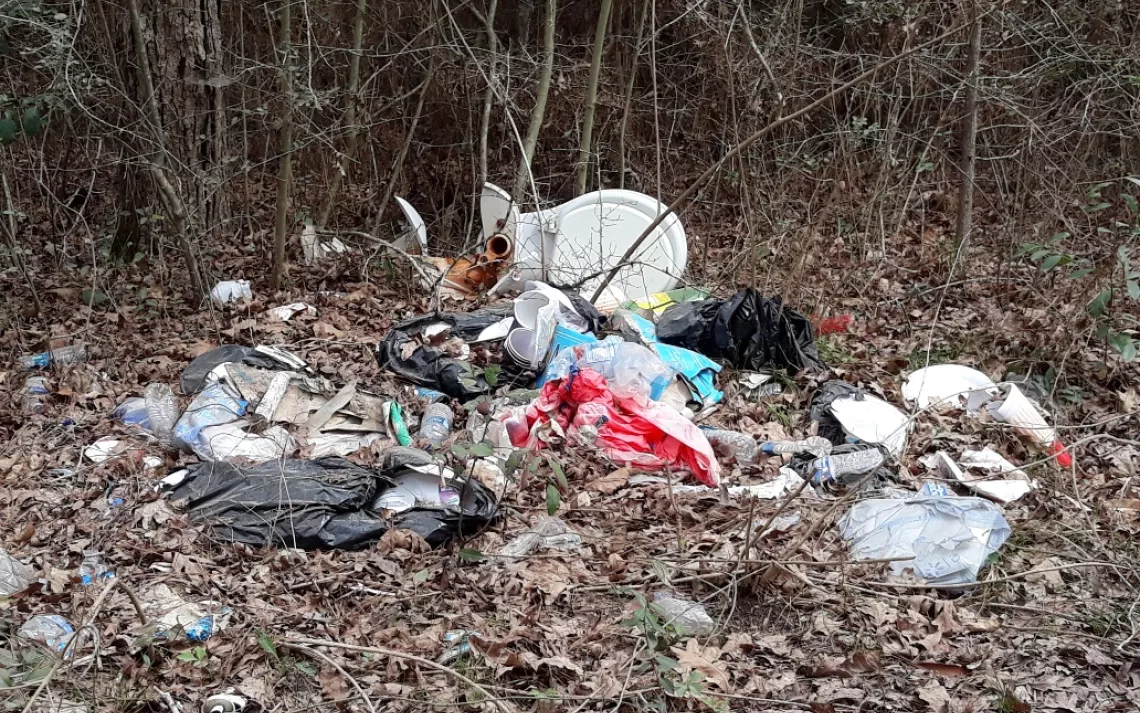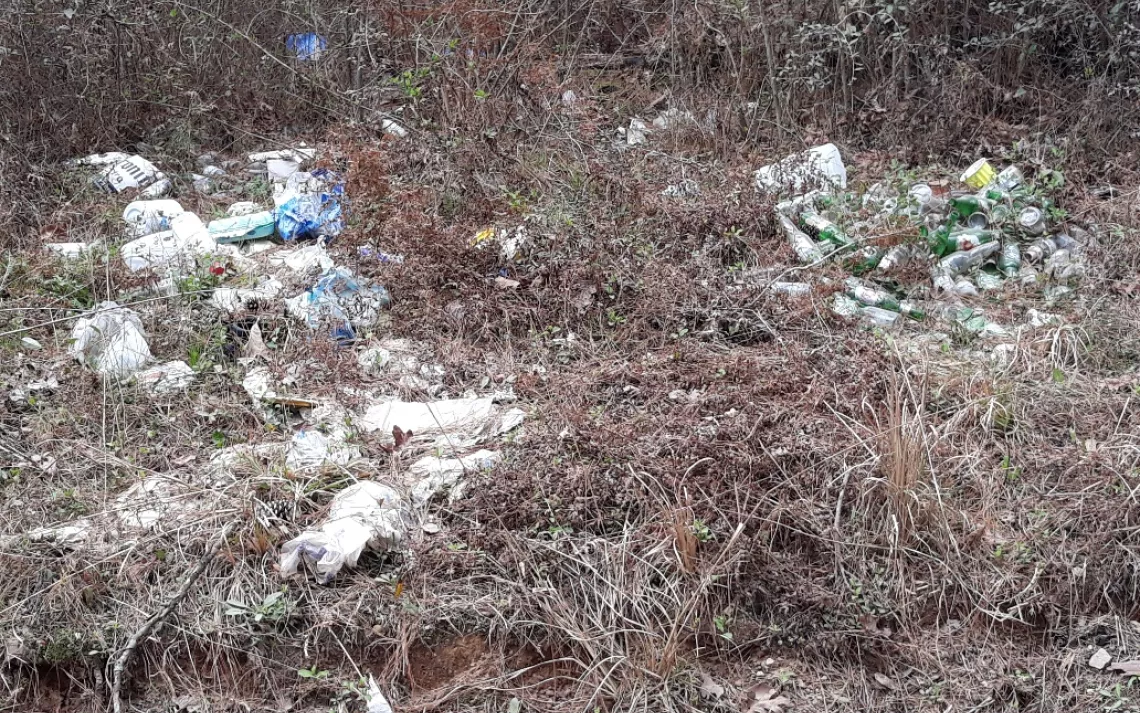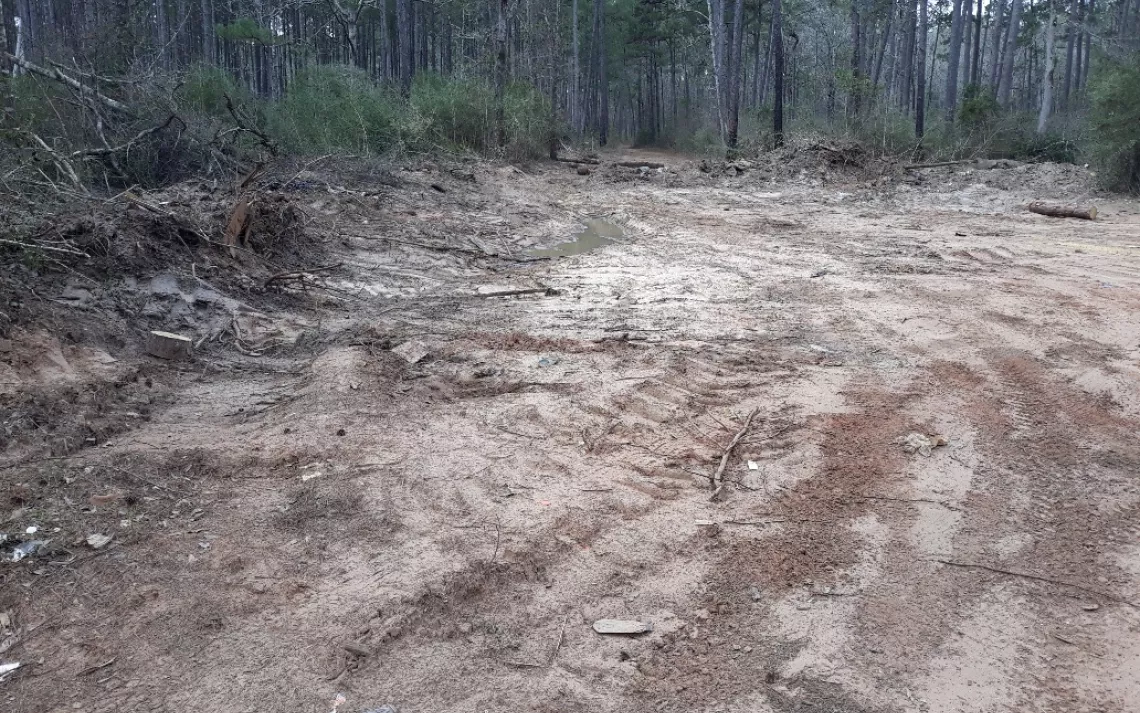On August 12, 2020, the Houston Group and Lone Star Chapter of the Sierra Club (Sierra Club) visited Compartments 110 and 111 on the east side of Sam Houston National Forest (SHNF). This is part of our Forest Watch activities that we Sierra Club conduct periodically. The Sierra Club looked at a stream and a pipeline right-of-way (ROW). This article summarizes what the Sierra Club found and reported to the U.S. Forest Service (FS).
The Gulf South Pipeline ROW goes from the southwest to the northeast through Compartments 110 and 111. The soils are sandy and there are shrubs, seedling trees, grasses, and herbaceous blooming plants like bitterweed, liatris, aster, coreopsis, false foxglove, species, wooly croton, American Beautyberry, Sweetgum, and St. Andrew’s Cross growing in the ROW.
Then the Sierra Club walked from the ROW, south on a tributary of Tarkington Bayou, through a mixed pine-hardwood forest. The stream-bed was dry in this ephemeral stream. A culvert had been exposed, via erosion, on the north side of the ROW. The Sierra Club recommended that the FS repair, remove, or replace this culvert.
Some of the vegetation that was seen on this walk along and in the stream-bed included Loblolly Pine, White Oak, Cherry Laurel, Sebastian Bush, Blackgum, Yaupon Holly, Sweetgum, Southern Magnolia, elephant foot, American Beautyberry, Inland Sea Oats, Flowering Dogwood, green briar species, Japanese Climbing Fern, American Holly, hickory species (probably Mockernut), Southern Red Oak, American Hornbeam, Chinese Privet, Water Oak, Privet Forestiera (Forestiera ligustrina), White Ash, Yellow Passion Flower, Bracken Fern, and Buttonbush. There were signs of feral hog rooting and wallowing which caused significant soil disturbance.
Along Forest Road (FR) 221, In Compartment 111, the Sierra Club found a trail about 6-8 feet in width, that was eroded. The Sierra Club walked this entire trail which goes in a 200-yard arc from FR 221 to the Gulf South Pipeline ROW. This appears to be an illegal off-road vehicle (ORV) trail. The trail was bare, red, earth, and was eroded. The Sierra Club recommended to the FS that this illegal ORV trail should be removed and the forest restored.
The Sierra Club also found what appears to be a second illegal ORV trail which goes south through the forest about 150 feet around a downed tree on the Gulf South ROW and then rejoins the ROW. The trail is about 6-8 feet wide and was mostly bare, red, earth. The Sierra Club reported this illegal ORV trail to the FS and recommended that it be removed and the forest restored.
About 200 yards east from Tarkington Bayou, on the Gulf South ROW, the Sierra Club found a series of at least five rutted areas which create large ponds on the ROW. The Sierra Club believes that this part of the ROW should be restored to match the topography and provide proper drainage for the ROW. Illegal ORV use may have caused compaction, rutting, and ponding on the ROW.
Finally, the Sierra Club noticed that at the west side of the Gulf South ROW where it intersects with FR 221, the ROW gate/fence is recessed about 150 to 200 feet from the road. Within this space people have dumped trash, including parts of cut trees. To reduce illegal ORV access and dumping in Compartment 111 and the ROW, the Sierra Club recommended to the FS that the gate/fence be moved to within 40 feet of FR 221.
By conducting Forest Watch and reporting our observations to the FS the Sierra Club assists with protection of SHNF from illegal activities.
Author: Brandt Mannchen
